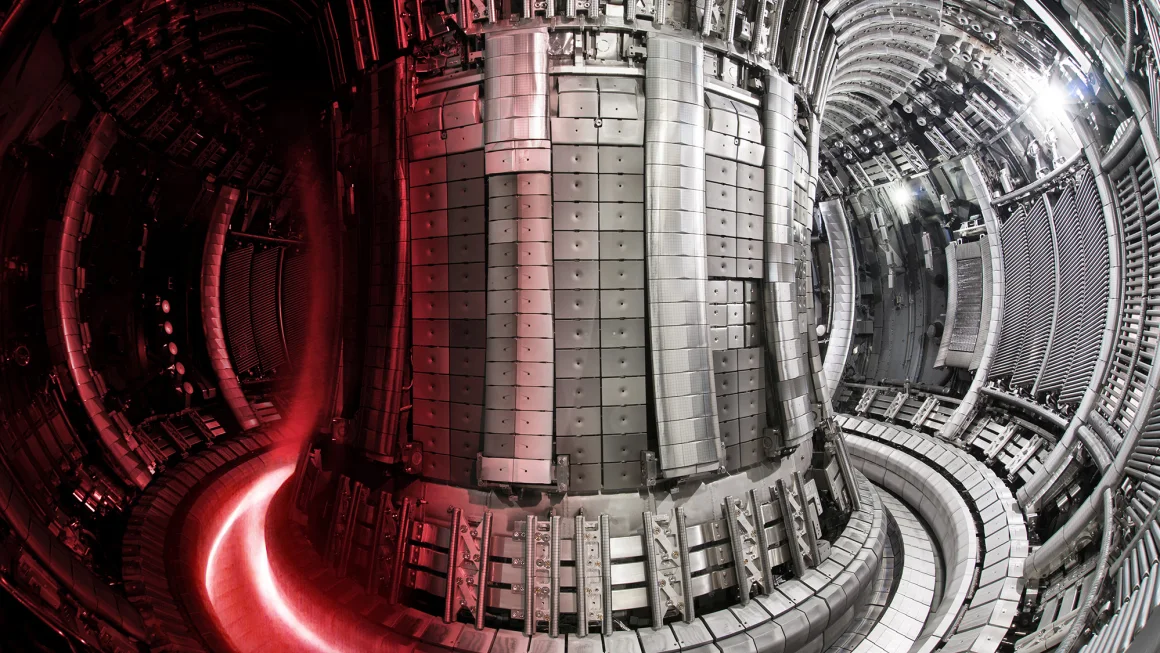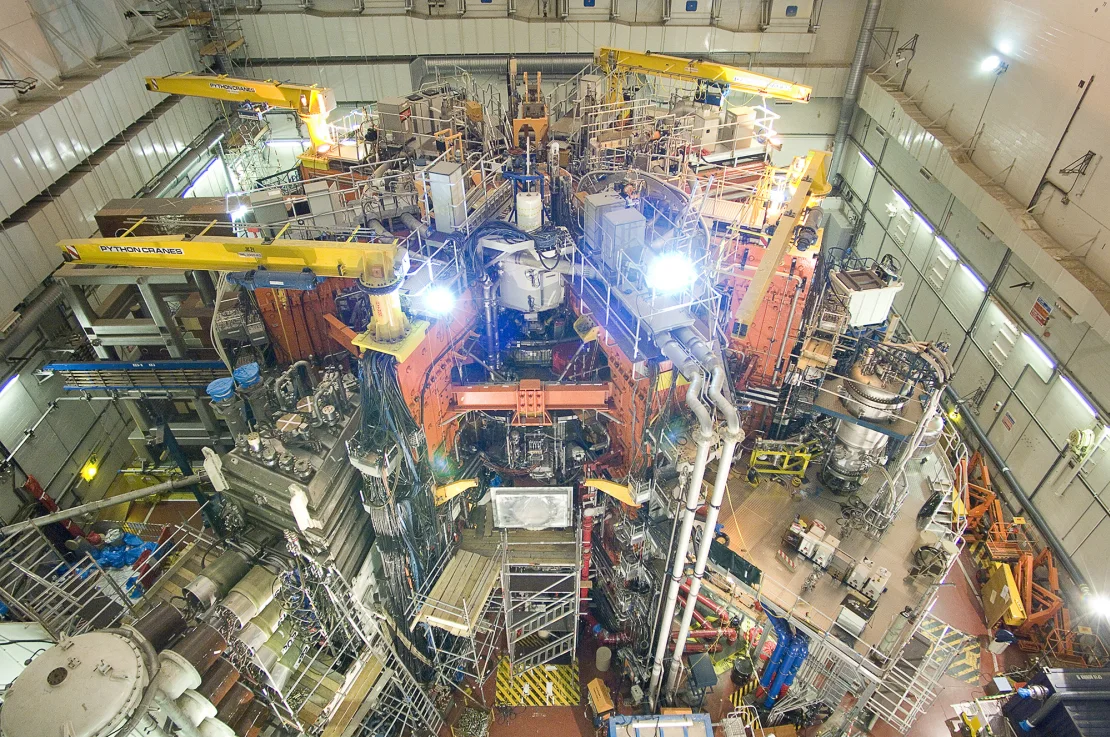
Researchers Achieve New Milestone in Nuclear Fusion, Moving Closer to Unlocking an Endless Clean Energy Source
Near Oxford, England, a team of scientists and engineers recently achieved a groundbreaking nuclear fusion energy record, as announced on Thursday. Utilizing the Joint European Torus (JET) — a massive, torus-shaped apparatus known as a tokamak — they managed to maintain a fusion energy output of 69 megajoules for five seconds with just 0.2 milligrams of fuel.
Nuclear fusion, the process that fuels the sun and stars, is considered the ultimate clean energy solution. Achieving this process on Earth has been a complex challenge that experts have pursued for decades. Successful fusion could produce vast amounts of energy from minimal fuel, without emitting any carbon, thus having no impact on climate change.
The experiment involved feeding deuterium and tritium, both hydrogen isotopes, into the tokamak. These isotopes are the likely fuel choice for future commercial fusion reactors. By heating the tokamak to 150 million degrees Celsius, ten times hotter than the sun's core, the team induced the fusion of deuterium and tritium, creating helium and releasing significant heat in the process.

This heat is contained within the tokamak by powerful magnets and could potentially be converted into electricity. Marking the end of JET's over 40 years of operation, this record-setting experiment offers promising insights for upcoming fusion projects like ITER, the largest tokamak under construction in France, and DEMO, its successor aimed at demonstrating a fully operational fusion power plant.
Ambrogio Fasoli, CEO of EUROfusion, the consortium behind the JET experiment, highlighted the significance of this achievement for future fusion technology, particularly in bolstering confidence for projects like ITER and DEMO.
Despite the potential of fusion energy to revolutionize the fight against climate change, experts like Aneeqa Khan from the University of Manchester caution that the technology still faces significant hurdles and is years away from commercial viability. The experiment consumed more energy than it generated, and there are numerous engineering and material challenges to overcome. Nonetheless, growing investment and progress in the field are encouraging, and there is a need for training more specialists in fusion technology.
This announcement coincided with the European Union’s Copernicus service reporting that global warming has exceeded a 1.5 degrees Celsius threshold over a 12-month period for the first time, underscoring the urgent need for innovative solutions to climate change. Achieving significant reductions in greenhouse gas emissions this decade and reaching zero net emissions by 2050 are critical steps in preventing catastrophic climate change, necessitating a swift move away from fossil fuels.










